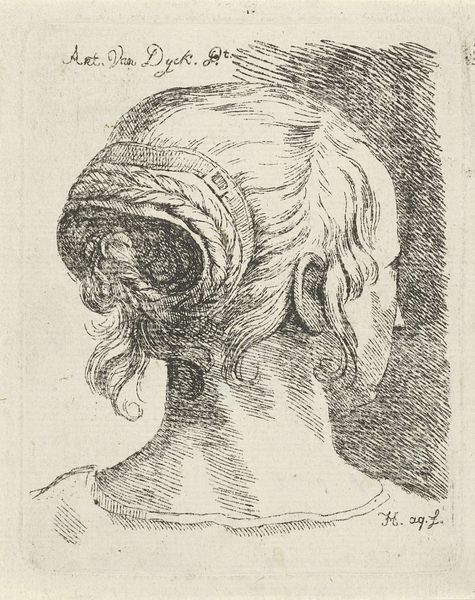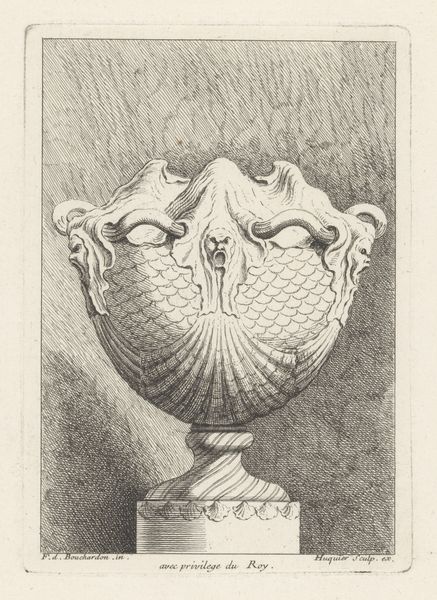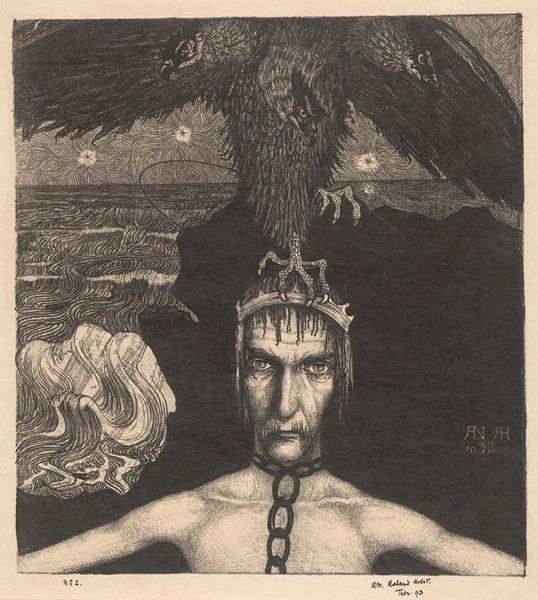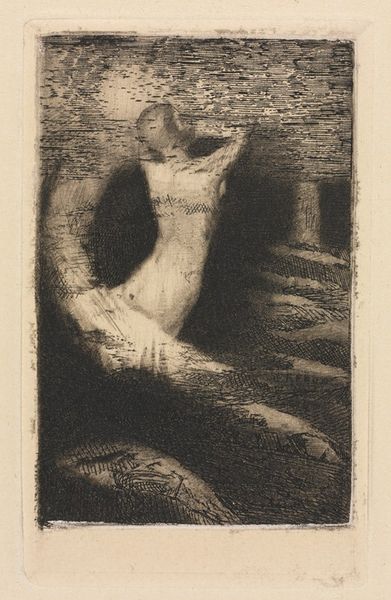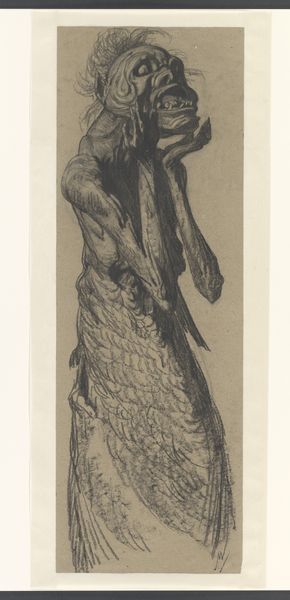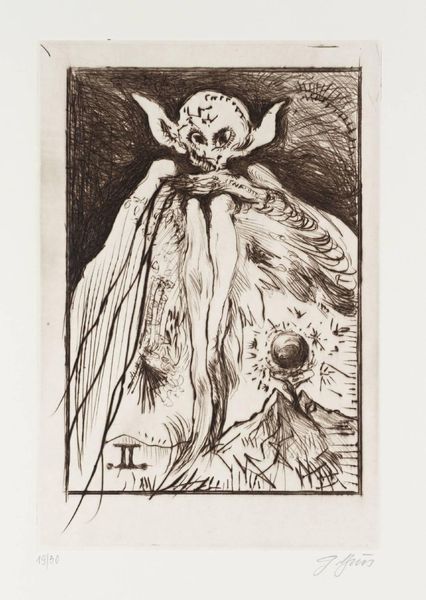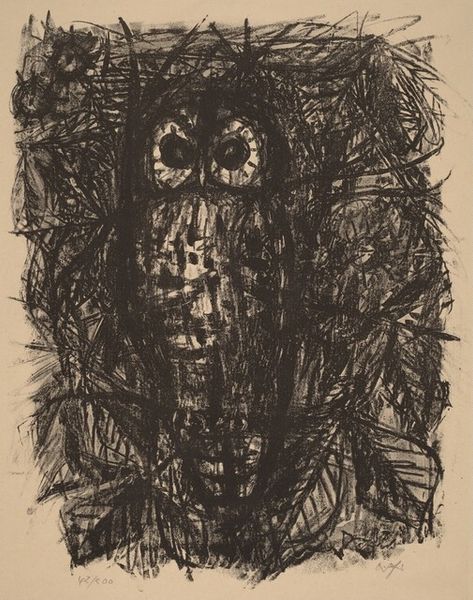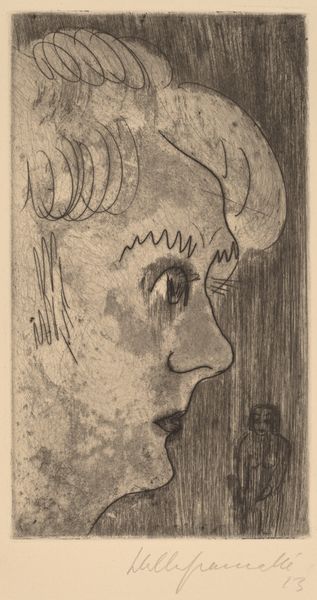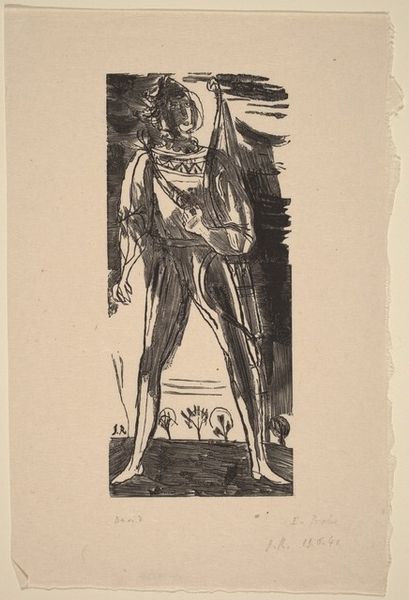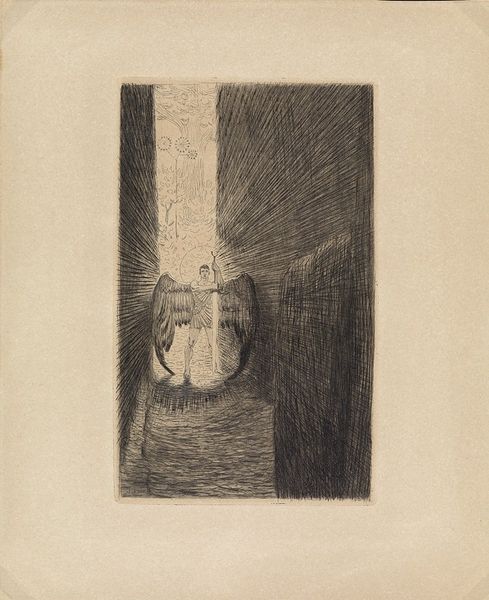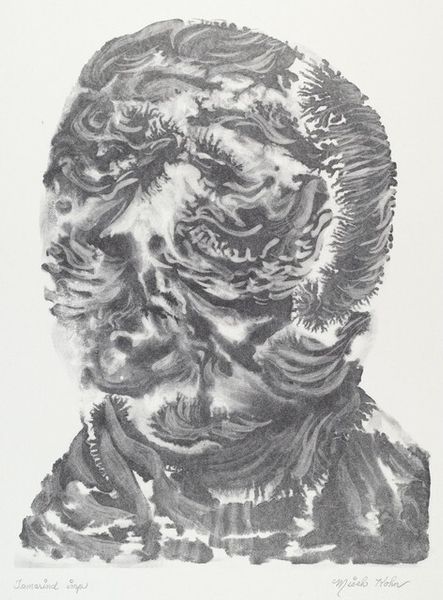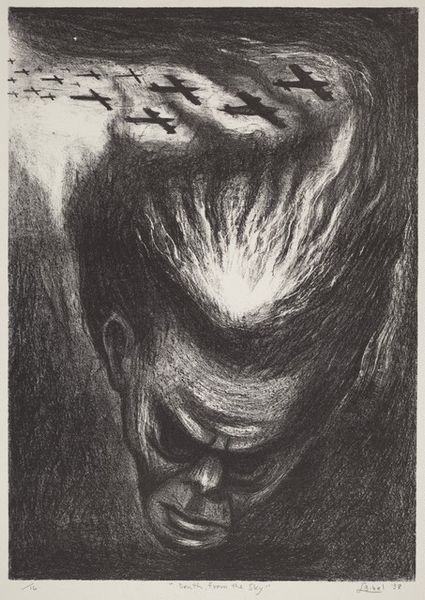
Copyright: Germaine Richier,Fair Use
Curator: Germaine Richier's "Self-Portrait," created in 1949, immediately strikes me as something raw, deeply personal, even vulnerable. What’s your take? Editor: Somber, I'd say. The harsh lines of the etching give it a haunted quality, almost as if the image is disintegrating before our eyes. Look at the way the plate tone varies, it accentuates the subject's form. Curator: The mid-20th century was a time of intense artistic exploration. Richier, though often associated with sculpture, embraced printmaking, exploring new ways to represent the human figure in a post-war context. This work exemplifies the modern fascination with inner psychological states. Editor: Absolutely, and notice how she uses the etching technique itself to convey that instability. The lines are roughly etched, uneven. It isn’t about precision, but rather the textural quality that reveals her state of mind, or, indeed, the psychological weight pressing upon women artists during this time. I think of her labor: The materials at hand in studio practice…the acid biting the metal…the sheer act of producing numerous editions in this medium... it speaks of her intent. Curator: There's also an anchor in the composition; a symbol that typically denotes stability. It poses interesting questions when considered alongside the unstable self-portrait. Is this an allusion to the anchor that the institution provides for its workers? Editor: Or perhaps a challenge. It begs the question of what we choose to hold onto during upheaval, as humans, but also as an artist navigating a market that would likely reject many of her modernist contemporaries. Curator: A lot to consider, really. The work encapsulates a particular moment of introspection, of modern society's engagement with themes of inner fragmentation and societal tension. Editor: Right. And by examining how this print was produced and circulated, it is difficult not to observe how this seemingly unstable portrait reflects the enduring legacy and agency of Richier.
Comments
No comments
Be the first to comment and join the conversation on the ultimate creative platform.
